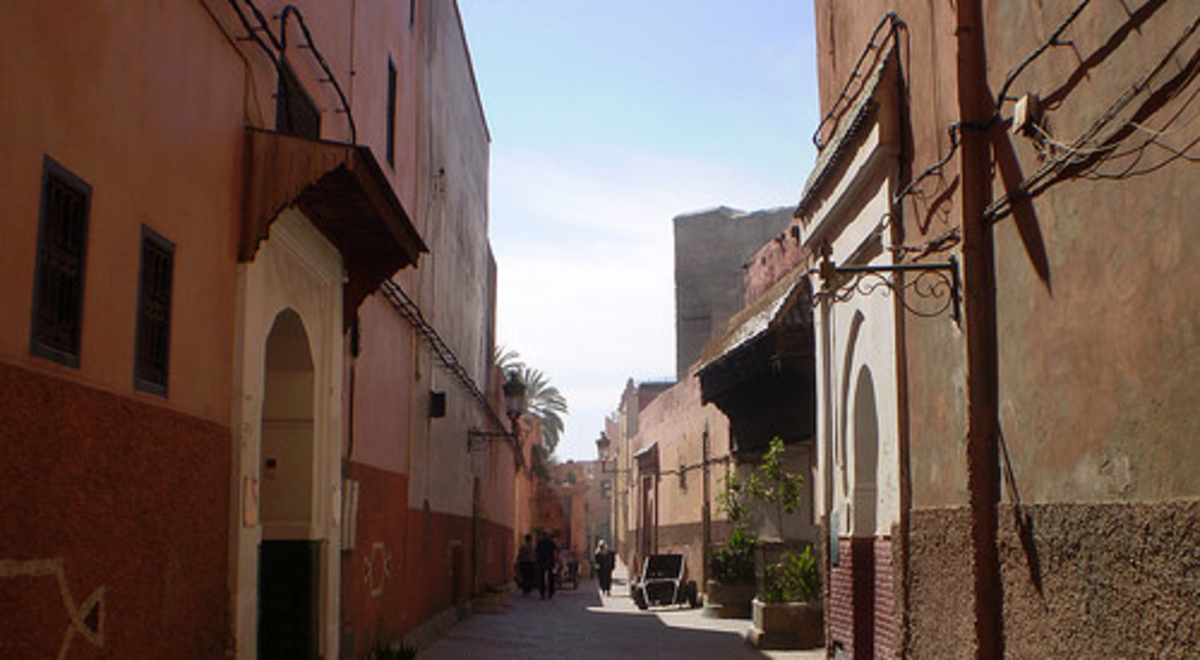By Cassidy Parker
I arrived in Marrakesh by train some time after dark. Perhaps I imagined it, but it felt as though the eight-hour journey from Fes, through the capital, Rabat, and the iconic Casablanca, had left me covered in a dust ancient and full of stories. I needed the dust to settle, to stretch my legs properly, and to find a meal. Marrakesh, as it turned out, was precisely where I needed to be.
It wasn’t long after stepping off the station platform that I wandered quite accidentally – though perhaps inevitably – into the heart of the city: the beating life source that is the Djemaa el Fna. By day, little more than a market, this central square erupts into something from your most extravagant Maghrebian dreams by night.
The Djemaa el Fna at sunset, just as the festivities get under way
Usually translated into “assembly of the dead”, the Djemaa el Fna captivates locals and foreigners alike night after night. Lamps shed their light on food stalls fit to satisfy every culinary curiosity and desire, acrobats flick-flack and contort, snake charmers entrance more than their serpentine familiars, and storytellers weave narratives in fluid French and Arabic. Best of all, dentists advertise their skills by carefully arranging the teeth they have recently pulled.
Beyond the edges of the Djemaa el Fna, the city sprawls in every direction, with souks and suburbs, streets with traffic so chaotic that nerves require steeling, and side streets so quiet that the rest of the world is forgotten.
The souks are roughly divided into the different and multiple crafts to which Morocco has claim: leatherwork, furniture, carpets, ironwork, jewellery and musical instruments among them. Often, the craftsmen behind your purchases can be seen working away, although the jewellery and carpets tend to come in from the more rural areas, each with its own unique design.
Like most large cities, the key to uncovering Marrakesh’s particular flavour is to walk. Walk everywhere. Accept that you will lose yourself in the souks, and learn to love the disorientation. Follow your nose. Eat everything. Be patient. Refine your bargaining abilities.
Marrakesh’s city walls, complete with the usual sites: fruit-sellers and stork nests
Marrakesh also provides easy access so some of Morocco’s most captivating sites. Day trips into the Sahara Desert can be arranged through any number of tour operators, and can range from several days to several weeks in duration.
The small village of Setti Fatma, nestled into the foothills of the Atlas Mountains, an easy day trip from Marrakesh
Exploring the countryside around Setti Fatma in the Atlas Mountains
The Atlas Mountains are so close that from the many rooftop bars and restaurants across the city, their snow-capped peaks feel almost tangible. If time isn’t on your side, day trips to small mountain villages are possible and allow you to experience this piece of planet in all its rawness, together with the people and animals – goats, donkeys and camels – that call it home.
Making friends in Morocco
Athree-and-a-half-hour bus trip west of Marrakesh will see you in the small fishing town of Essaouira. A world away from the hustle and bustle of the Djemaa el Fna, this sleepy corner of the country has medieval-esque battlements, whitewashed and blue-shuttered homes, an abundance of art galleries, and also happens to be one of the world’s greatest wind- and kitesurfing hotspots.
Fishing boats in Essaouira
Essaouira is one of the best places in the world to give kitesurfing a try
At the end of your time in this part of Morocco, you are sure to find yourself back where you began – munching on dates, figs and apricots and washing it down with spiced coffee or mint tea in the Djemaa el Fna. Take note of the dust on you, it has stories to tell.






